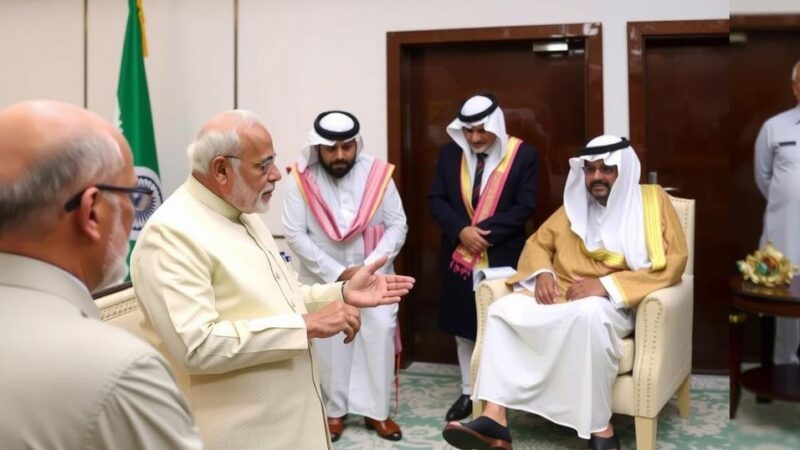Kolwezi, D.R. Congo, is pivotal in U.S.-Chinese competition for critical minerals, particularly copper and cobalt. The U.S. aims to reduce China’s dominance through the Lobito Corridor project, alongside vast investments from international partners. While this initiative could enhance ore transportation to global markets, local miners continue to suffer low wages amidst a significant Chinese presence in the mining sector.
Kolwezi, a small city in southern Democratic Republic of Congo, stands at a strategic crossroad in the global competition for critical minerals, particularly copper and cobalt. Nestled among mines and slag heaps, this city is pivotal to U.S. attempts to counter China’s dominance in the mineral sector, as exemplified by the recent launch of a U.S.-backed railway leading to Angola’s coastal port of Lobito. This railway aims to facilitate the transport of Congolese ore, which is vital for electric vehicle batteries and other technologies, thereby reducing reliance on longer, less efficient routes through ports on the Indian Ocean.
President Biden’s upcoming visit to Lobito underscores the commitment of the United States, along with international partners including the European Union and G7 nations, to invest billions into this infrastructure development initiative. Russell Fryer, CEO of Critical Metals, emphasizes the economic potential, noting a growing urgency among Western nations to secure access to Africa’s abundance of mineral resources, which are becoming increasingly contested.
Despite these efforts, the Democratic Republic of Congo continues to be dominated by Chinese investments. Chinese corporations control approximately 80 percent of the country’s copper mines and maintain a stronghold over cobalt extraction as well. The pervasive influence of China is evident in Kolwezi, where Chinese establishments and signage are prevalent, and local miners like Marie Banza Ngoy often find themselves earning meager wages while working under poor conditions.
The Lobito Corridor, while a significant initial step for U.S. interests in Africa, may not dramatically alter the landscape of mineral extraction. Analysts indicate that, lacking substantial direct investments from U.S. companies on the ground, the Lobito initiative might represent only a small contest in the broader narrative of geopolitical influence. Furthermore, local Congolese citizens often remain disconnected from the benefits of their nation’s rich mineral wealth, pointing to systemic issues of corruption and inefficiency that inhibit equitable resource distribution.
The Democratic Republic of the Congo is richly endowed with minerals, notably copper and cobalt, crucial for modern technologies, including electric vehicles. Kolwezi, in particular, is a hub for mining operations that play a significant role in the global supply chain for these critical materials. The competition for these resources has intensified, particularly between the United States and China, with both nations seeking to secure their interests and influence in Africa. China’s proactive Belt and Road Initiative has strengthened its foothold in the region, whereas the U.S. has been perceived as lagging in investment and engagement, prompting a renewed focus on infrastructure projects like the Lobito Corridor to bolster its presence in the mineral-rich DRC.
In conclusion, Kolwezi’s significance as a focal point in the global mineral trade is underscored by the burgeoning competition between the United States and China. While U.S. investments through the Lobito Corridor signify an effort to reclaim influence in Africa, the reality on the ground reveals a complex web of economic challenges and the overarching presence of Chinese firms. As the Congolese population grapples with systemic poverty and corruption, it remains to be seen whether these geopolitical maneuvers will translate into tangible benefits for the local communities that underpin the mineral wealth.
Original Source: www.wmra.org







